The Trail Insider’s Handbook: Game-Changing Gear That Experienced Hikers Don’t Want You to Know About
When preparing for a hike, most guides recommend the same essentials—quality backpacks, hiking boots, and weather-appropriate clothing.
But speak to anyone who’s completed a thru-hike or spends significant time on trails, and you’ll discover there’s a whole category of game-changing hiking gear that rarely makes those standard lists.
In this OTL guide, we’ve collected insights from Appalachian Trail thru-hikers, experienced mountaineers, and professional outdoor guides to reveal the most underrated hiking equipment that can make a significant difference on your next adventure.
Why You Should Trust This List
Unlike many gear guides, this collection isn’t based on sponsorships or the latest 2025 trends.
Each item has been:
- Validated by real hikers with thousands of trail miles
- Selected for solving specific, common hiking problems
- Tested in diverse environments and conditions
- Chosen for its actual performance, not marketing hype
The 10 Most Underrated Hiking Gear Items for 2025
1. Anti-Chafe Balm: Your Blister Prevention Secret
While most hikers pack moleskin for blisters that have already formed, experienced trekkers prevent the problem entirely with anti-chafe balms.
Products like Body Glide create a friction-free barrier that prevents hot spots before they develop into painful blisters.
Why it’s essential: A single blister can transform an enjoyable hike into a painful ordeal. Anti-chafe balms are lightweight, long-lasting, and more effective than traditional petroleum jelly.
Best for: Long-distance hikers, hot and humid conditions, and anyone prone to chafing or blisters.
Pro tip: Apply to feet, inner thighs, and anywhere gear might rub before starting your hike, then reapply every 4-6 hours on longer treks.
2. Portable Water Filter Straw: Hydration Without Delays
Traditional pump filters work well but require stopping, unpacking, and pumping. Straw-style filters like the LifeStraw or Sawyer Mini allow you to drink directly from water sources without breaking stride.
Why it’s essential: Staying properly hydrated improves performance and safety, and these ultralight filters remove 99.9% of bacteria and parasites without chemicals or waiting.
Best for: Fast-paced hikers, minimalists, and emergency preparedness.
Pro tip: Many straw filters can attach directly to standard water bottles, giving you the best of both worlds.
3. Trekking Umbrella: Sun and Rain Protection Reimagined
It might seem counterintuitive, but hiking-specific umbrellas like the Six Moon Designs Silver Shadow have developed a cult following among serious trail enthusiasts.
Why it’s essential: Unlike rain jackets that can trap heat and sweat, umbrellas provide excellent protection without the sauna effect.
They also create shade in exposed terrain and can be used hands-free with the right attachments.
Best for: Hot rainy climates, desert hiking, and sun-sensitive individuals.
Pro tip: Look for models with reflective surfaces to maximize sun protection and UV blocking capabilities.
4. Darn Tough Socks: The Last Socks You’ll Ever Buy
While expensive ($20+ per pair), these Vermont-made merino wool socks come with a genuine lifetime warranty and are favored by long-distance hikers.
Why it’s essential: Superior moisture management, blister prevention, and remarkable durability make these a worthy investment for serious hikers.
Best for: Multi-day treks, cold weather hiking, and anyone tired of replacing worn-out socks.
Pro tip: Rotate between 2-3 pairs on longer trips, washing one pair each evening to maximize freshness and comfort.
5. Tenacious Tape: Field Repairs Made Simple
This advanced repair tape bonds permanently to fabrics and technical materials, allowing you to fix tears in tents, sleeping bags, rain gear, and packs without carrying a sewing kit.
Why it’s essential: Gear failures happen, and this ultralight solution can salvage expensive equipment and prevent minor issues from becoming major problems.
Best for: Remote backcountry trips, thru-hikes, and adventure travel.
Pro tip: Pre-cut small strips and store them in your first-aid kit for immediate repairs.
6. Kula Cloth: The Revolutionary Pee Cloth
This antimicrobial, quick-drying cloth is designed specifically as a reusable alternative to toilet paper for urination, particularly benefiting female hikers.
Why it’s essential: Reduces toilet paper waste, prevents UTIs from poor hygiene, and offers a more sanitary option than bandanas or natural materials.
Best for: Female hikers, environmentally conscious trekkers, and multi-day adventures.
Pro tip: The antimicrobial silver-infused fabric actually becomes more effective with use as the silver particles activate.
7. Heavy-Duty Freezer Bags: Ultralight Organization System
Experienced backpackers often skip expensive dry bags in favor of gallon-size freezer bags, which organize gear, protect electronics, and keep clothes dry at a fraction of the weight and cost.
Why it’s essential: These nearly weightless organizers compress clothing, protect electronics, and keep gear sorted for easy access.
Best for: Ultralight hikers, budget-conscious adventurers, and anyone who appreciates organization.
Pro tip: Use different colors or label the bags for different categories of gear (clothing, electronics, food, etc.).
8. Nitecore NU25 Headlamp: Lighter Than Traditional Options
At just 28 grams, this USB-rechargeable headlamp outperforms many heavier, battery-operated options with 360 lumens and multiple lighting modes.
Why it’s essential: Visibility is a safety issue, and this ultralight option doesn’t compromise on performance or battery life.
Best for: Night hiking, ultralight backpacking, and those who hate changing batteries.
Pro tip: The red light mode preserves night vision and doesn’t attract insects like white light does.
9. Therm-a-Rest RidgeRest Foam Pad: Multi-Use Marvel
This thin closed-cell foam pad weighs less than 2 ounces but serves multiple crucial functions: insulation for breaks, padding for frameless packs, and protection for inflatable sleeping pads.
Why it’s essential: The versatility-to-weight ratio is unmatched, making it valuable for comfort, safety, and gear protection.
Best for: Minimalists, long-distance hikers, and clever packers who appreciate multi-use items.
10. NACETURE: Responsible Backcountry Bathroom Solution
At just 0.6 ounces, this aircraft-grade aluminum trowel easily digs cathole latrines for proper waste disposal in the backcountry.
Why it’s essential: Leave No Trace principles require proper human waste disposal, and this tool makes it easy to dig the recommended 6-8″ deep holes.
Best for: Environmentally conscious hikers, remote backcountry travelers, and anyone staying overnight in undeveloped areas.
Pro tip: The pointed end works well in harder ground, while the wider end excels in softer soil.
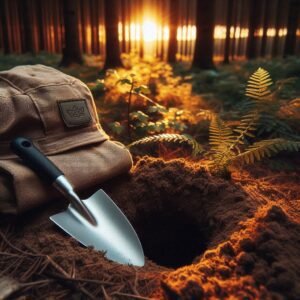
Frequently Asked Questions About Underrated Hiking Gear
Q: Do I really need a trekking umbrella if I already have a good rain jacket?
A: While rain jackets are essential, they often trap body heat and sweat during exertion.
Trekking umbrellas provide superior breathability while keeping you dry, plus they offer shade in sunny conditions—something a rain jacket can’t do.
Many experienced hikers actually carry both for different situations.
Q: Are specialized anti-chafe balms really better than just using petroleum jelly?
A: Yes, significantly. Petroleum jelly can stain expensive technical clothing, doesn’t last as long in sweaty conditions, and feels greasier on skin.
Purpose-made anti-chafe balms are sweat-resistant, longer-lasting, and won’t damage your gear.
Q: Why would I use freezer bags instead of investing in waterproof stuff sacks?
A: Freezer-grade Ziploc bags weigh practically nothing, cost pennies, and can be replaced easily. They’re surprisingly durable and allow you to organize gear into smaller, more manageable units.
Many thru-hikers use a combination—waterproof stuff sacks for critical items like sleeping bags, and freezer bags for everything else.
Q: Is a specialized trowel really necessary? Can’t I just use a stick or rock?
A: While natural tools can work in soft soil, they’re often inadequate in rocky, root-filled, or compacted ground—precisely where you’ll find yourself needing to dig a cathole.
A lightweight trowel ensures you can dig to the proper 6-8″ depth required by Leave No Trace principles, regardless of soil conditions.
The Takeaway: Small Items, Big Impact
The most transformative hiking gear often isn’t the expensive, flagship items that get the most attention. Instead, it’s these clever, problem-solving pieces that experienced hikers have discovered through countless miles on trail.
By adding a few of these underrated items to your kit, you can significantly improve comfort, safety, and enjoyment on your next adventure—without adding much weight or cost to your pack.
Have you discovered an underrated piece of hiking gear that changed your trail experience?
Share your findings in the comments!
- Ideal for outdoor recreation, hiking, camping, scouting, domestic or international travel, and emergency preparedness
- High-performance 0.1 micron absolute inline filter fits in the palm of your hand and weighs just 2 ounces; 100% of MINI …
- Attaches to included drinking pouch, standard 28 mm disposable water bottles, hydration packs, or use the straw to drink…
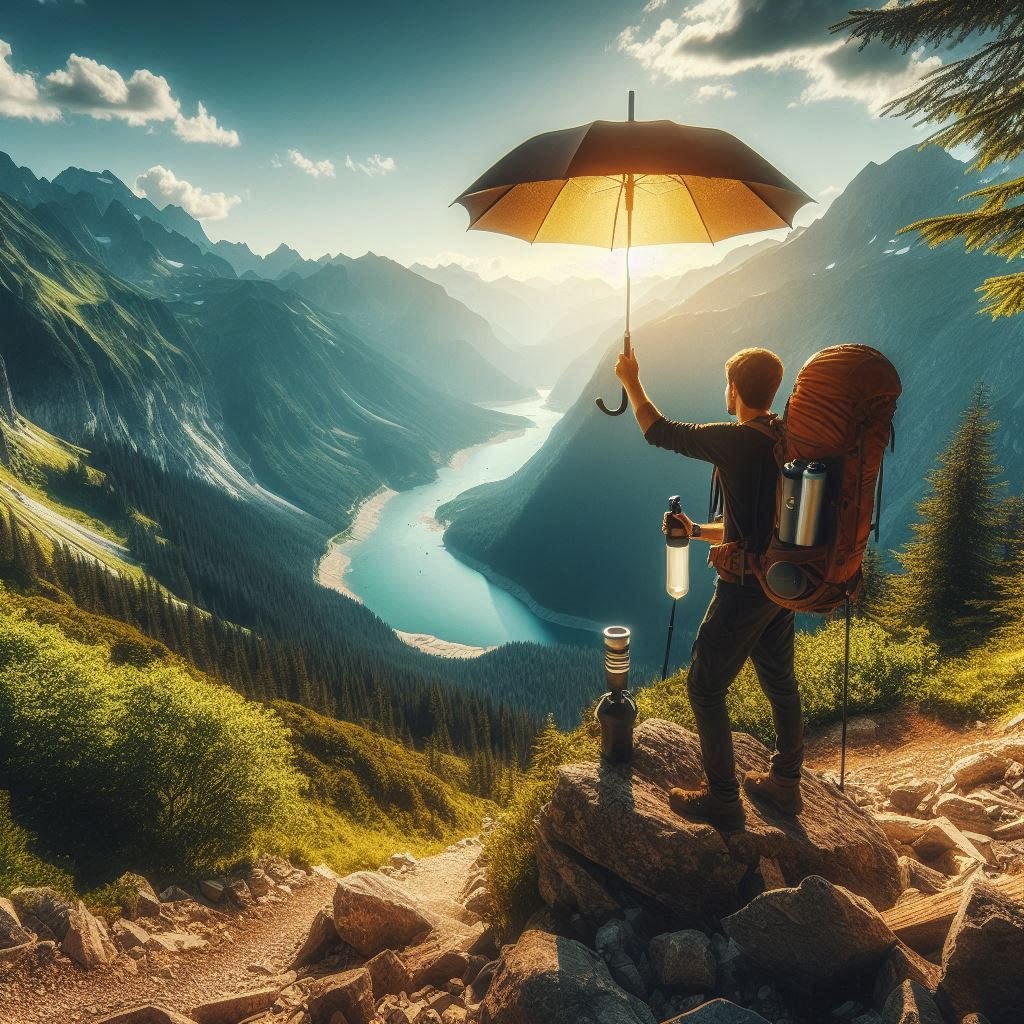
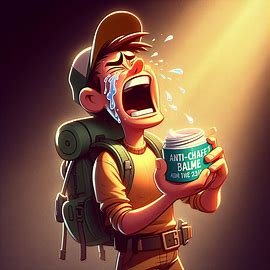
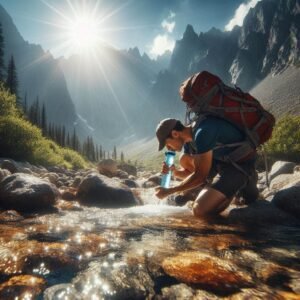
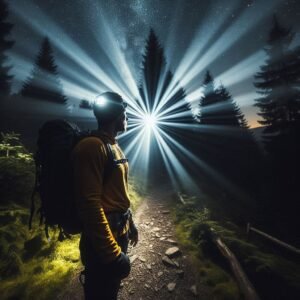

Leave a Reply